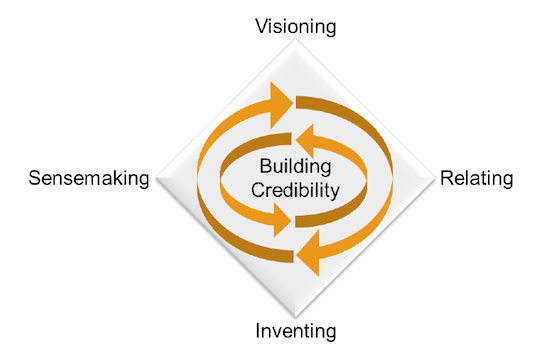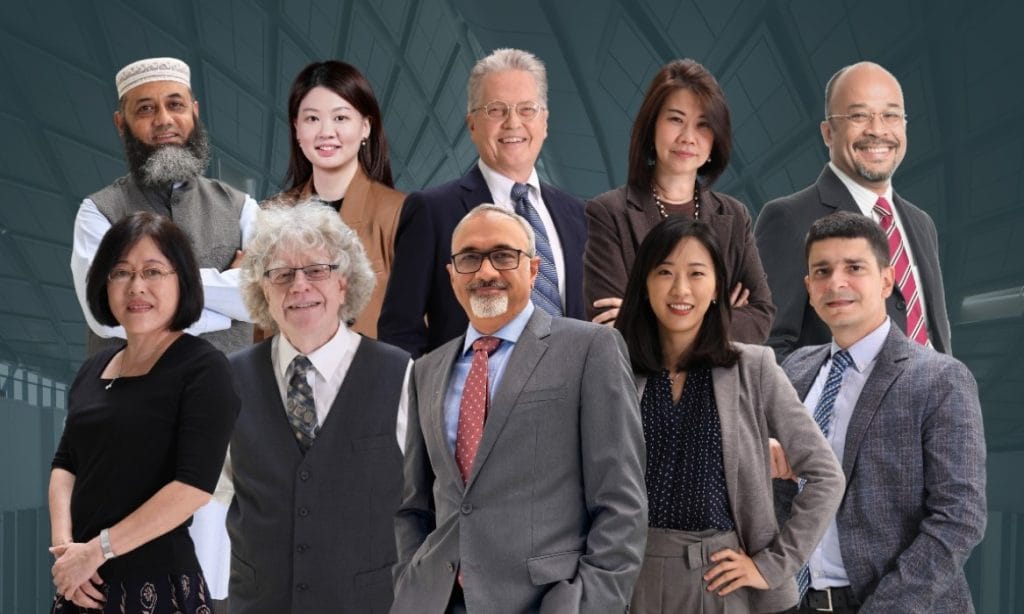Having been a leadership coach and consultant over the years, I have had many opportunities to be a part of organizational changes. In 2008, I was brought into a major family-turned-professional business to transform a top-down leadership model into a more decentralized approach. At the Kick-off session of this transformation initiative, the HR Senior Executive Vice President delivered her opening speech to the group of so-called Change Champions.
The speech lasted exactly one minute and consisted of exactly one slide. She said “As you know, the CEO wants a transformation. The organization needs to change, and you are the people selected to help lead this. Good luck and I’ll see you in 6 months”. The slide that accompanied her speech was a scan of the memo letter released by the Office of the President.
The texts were far too small to be legible, but you could make out the list of names and the CEO’s signature at the bottom. The irony of transforming towards an inclusive leadership model was uncanny. The SEVP then turned to leave the stage. On her exit she stopped, as if an afterthought has occurred, and spun around to point at me, “By the way this is Dr Tan. He is here to guide you all through the process. Best of luck. Everyone is counting on you!”.
I stood there with the mic in my hand. The room was silent. You could hear a pin drop. All thirty pairs of eyes were fixed on me. I started that session in a way I had never done before. I skipped my introduction, the objectives, the deliverables, the timelines; I skipped everything and started by asking these employees in the room, “How do you feel? Right now, give me one word on how you are feeling”. I then passed the microphone around for each to speak.
What do you think were the feeling words we heard that day? Positive or Negative? “Scared”, “Sad”, “Confused”, “Angry”, “Lost”, “Frustrated”, “Blurred”… one person said, “I have no feeling…” before adding a qualifier, “…this happens every time”. All thirty replies and not a single positive word. To think that this might be how most organizational changes start.
As an Asia School of Business (ASB) faculty, I’m going through the process called International Faculty Fellowship (IFF) with MIT Sloan. A part of that is my choosing to take an online Exec Ed course with Professor Deborah Ancona, who heads up the MIT Leadership Center. She will also be my IFF advisor. This self-paced course title is ‘Leadership in An Exponentially Changing World’.
The course centers on Sloan’s leadership model called 4-CAPS+ developed by Professor Ancona and her MIT colleagues, Thomas Malone, Wanda Orlikowski, and Peter Senge. They combined their collective learning, research, and experience to identify key leadership capabilities that underpin success: namely, 1) SENSEMAKING, 2) RELATING, 3) VISIONING, and 4) INVENTING plus an anchoring node called BUILDING CREDIBILITY. Each module is further elaborated with sub-dimensions.

Figure 1: The 4-CAPS+ model (executive.mit.edu)
For example, the story I shared above was my first true experience with what I now understand through the 4-CAPS+ model as Sensemaking and its four sub-dimensions. It starts with the importance of approaching a situation, especially ones with high sensitivity and volatility like driving change, with Open Mindedness. Such mental model would then lead to our Learning From Others, like I did that day about people’s true feelings as the team faced their challenging mandate.
From that point onward, we were able to work as a team to Creating Meaning from Uncertainty by agreeing that, while change may scare us, there are things that we can influence and control. The team together crafted our own vision of the change and a list of initiatives that we would Experiment.
With the recent integration of Iclif and the Asia School of Business, I tried to apply the 4-CAPS+ model to our post-merger challenges during Covid-19 time.
- SENSEMAKING – Each side of the integration needs to discuss their respective signatures in honesty and without prejudice. We must put on the single-organization hat and approach this challenge with a growth-mindset. Perhaps we could do a workshop on aligning our new culture, with an emphasis on showing vulnerability and honesty to create more trust amongst the current members.
- RELATING – Given Covid-19 and the restrictions (Malaysia is under our 3rd wave and currently under restricted movement control), it surely doesn’t help for people on each side of the integration to work from home and not be able to be with each other. Hopefully this ends soon, and as we all move into the new office, relationship amongst us improves and helps our mutual understanding of others.
- VISIONING – The business unit has operated since the integration without a Head, who left at the beginning of 2020. While the CEO has stepped in as an interim leader, he could only do so much. One promising news is that a dedicated head of the business unit has recently been brought on board. The vision would then be expected to get re-clarified and we can move forward towards a common goal again.
- INVENTING – Looking at the S curve of Executive Education and Higher Education as a whole, there is no denying that a new ‘log’ phase must soon be realized. Covid-19 has greatly impacted our classic business model, as physical learnings were all replaced by digital interfaces. The good news is, with our integration, the ASB umbrella is poised to offer a holistic solution that few in the industry can. There is great hope ahead, provided we can learn to work together synergistically.
+ BUILDING CREDIBILITY – For me this really is the key to the whole challenge. We need to readdress and have real conversations on our values, purpose, behaviors, management structures & processes, strategy, and performance.
Only when we realize that everything we do, individually and organizationally, all contributes towards our internal and external credibility, and we make the efforts to align these critical components, will ASB be able to establish our unique value proposition to the market and achieve sustainable success. What about your challenges? Given Covid-19 and the ‘New Normal’, how can you apply the MIT 4-CAPS+ leadership model at your organization?
Reference:
Ancona Deborah, Thomas W. Malone, Wanda J. Orlikowski, and Peter M. Senge. 2007. “In Praise of The Incomplete Leader.” Harvard Business Review, February, 2007.
Dr Thun Thamrongnawasawat (Tan) is one of the foremost experts on dissecting complex management and business models and cascading them for easy implementation by companies across different industries. His innovative B.A.S.E. model has inspired numerous organizations to transform.
He’s the author of the Brain-BASEd Leadership book series (2013-2016), a bestselling The Leadership Journey (2018) and a regular newspaper columnist. In 2015, Dr Thun was the recipient of World HRD Congress’s “Global Coaching Leadership Award” and named “Consultant of the Year” by the Ministry of Industry, Thailand.
He can be contacted at thun@asb.edu.my.
If you are interested to know more about our exciting Executive Education program click here.






